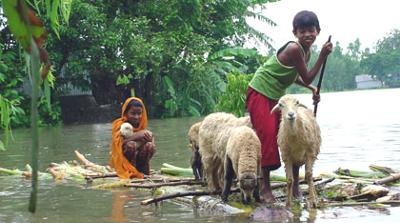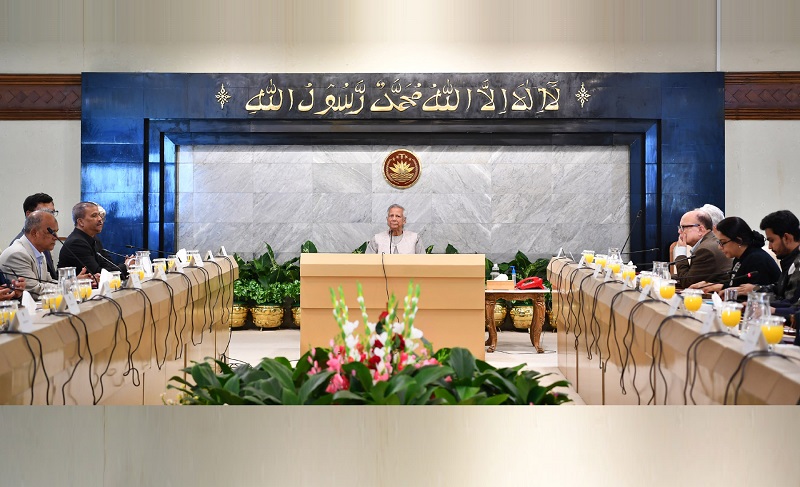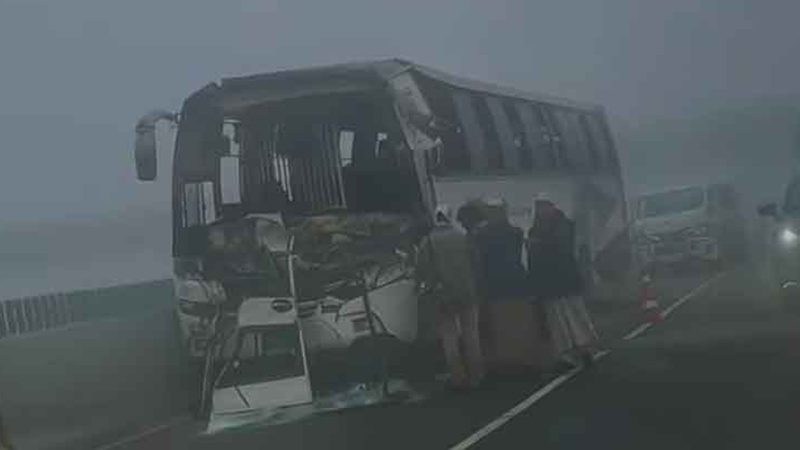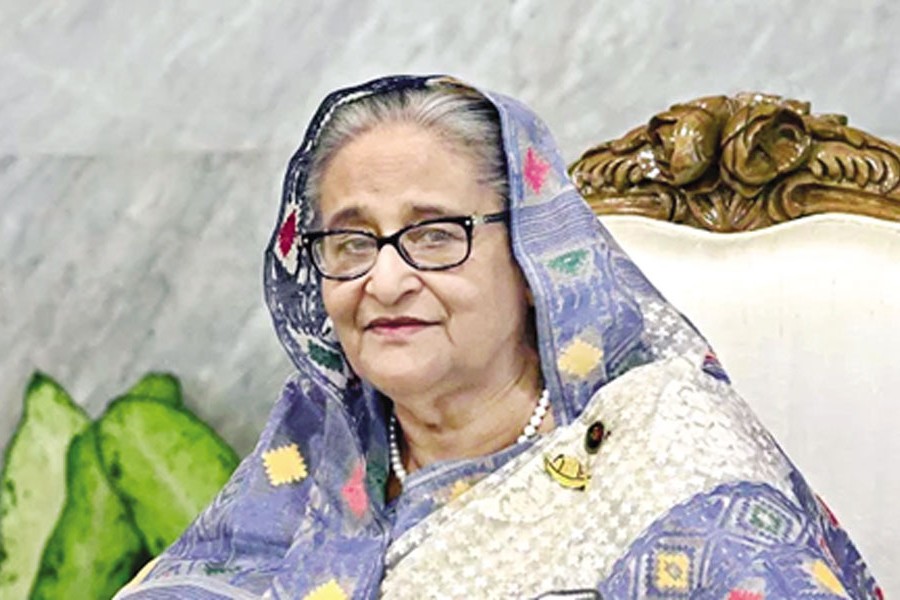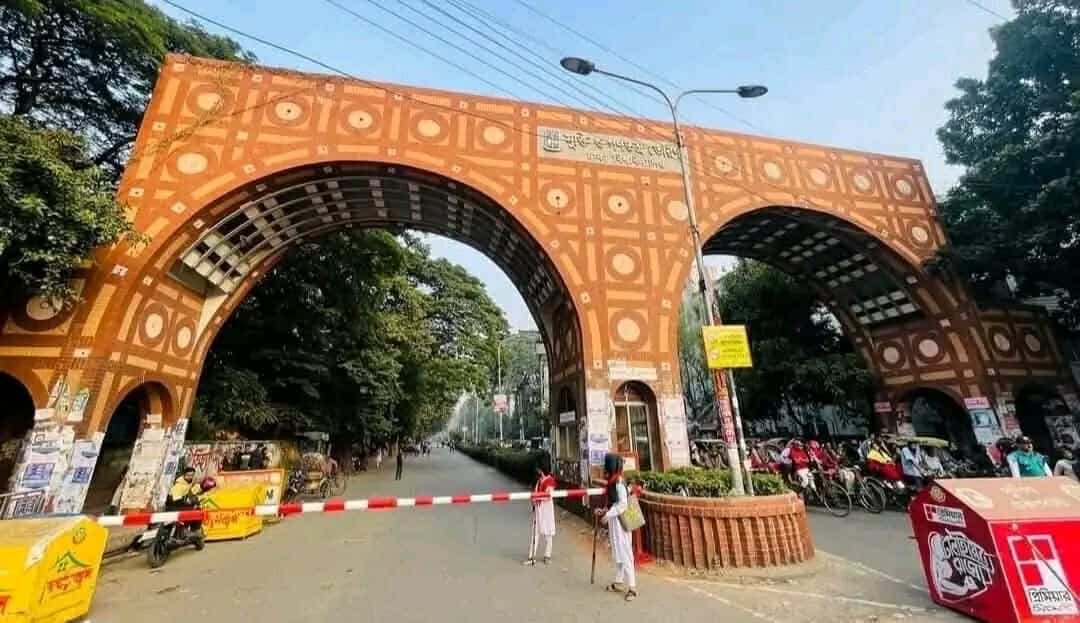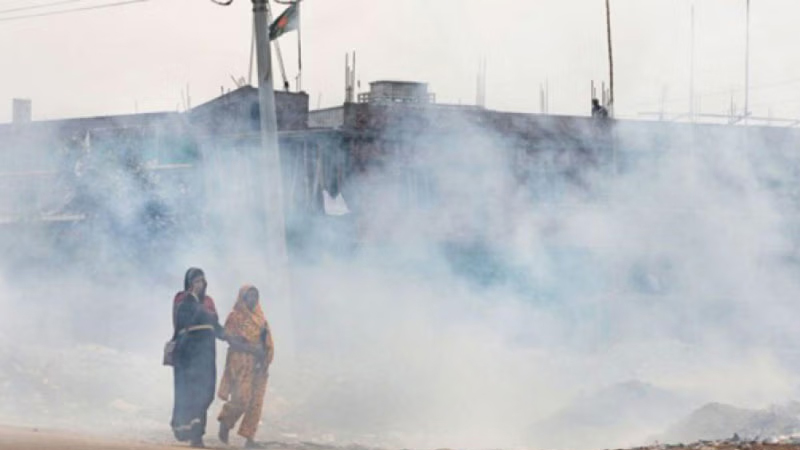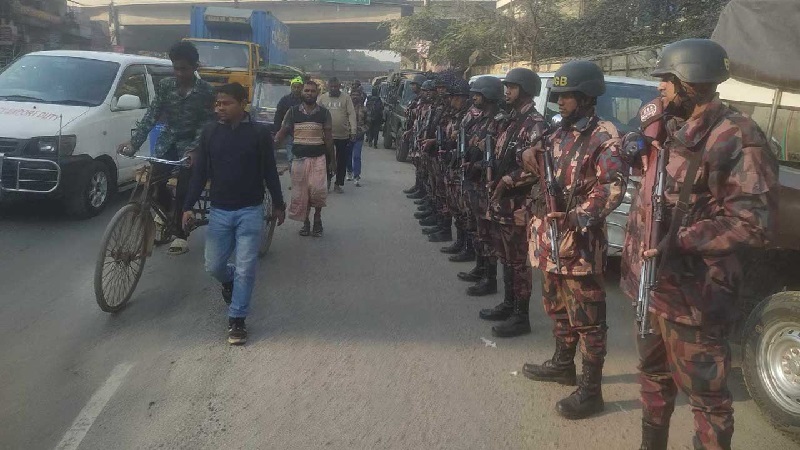Hundreds of people were driven out of their homes or shelters as the third wave of flooding swept Bangladesh with the total number of flood victims crossing 3 million on Wednesday.
Flooding got particularly worse in the north where many embankments finally collapsed after standing up to a huge onrush of water from upstream for 26 days since June 27.
At least one villagers — a middle-aged man — died after a government shelter was partially swept away prompting an emergency evacuation effort to move 4,000 people to a safer place in Gaibandha on early Wednesday.
So far, flood-related causes led to 86 deaths, showed health emergency control room’s daily flood report.
‘We tried our best to run away from the flood. We thought we did but now we know we did not,’ said Rais Uddin, the son of the victim, Delshad, 55, who was swept away from the flood shelter at Fulchari.
Related Coverage:
› Bangladesh flood may be longest since 1988, says UN body
› Flood, rain paralyse life across Bangladesh
› Fresh flood warned in Bangladesh
Water Development Board north region chief Jyoti Prashad Ghosh confirmed the incident saying that the sheltered people were evacuated to a safer place.
Rais along with his family and many other villagers had left Char their home at Fulchari on June 29 and has been living in the shelter ever since.
Another 9,000 people have taken shelter on an embankment close to the government shelter but they all are preparing to leave with forecasters predicting the River Jamuna to swell, setting some new water level records this time.
Fulchari was one of the six points the Jamuna was flowing above its danger marks in the north. The Brahmaputra, Teesta, Dharla and Ghaghat also flowed high above their danger levels at places in north.
About 300 families evacuate an embankment at Sinduna, Lalmonirhat after parts of it were washed away by the Teesta on Wednesday.
Another 1,500 flood victims left their shelters looking for a new place to live after five embankments collapsed in Rangpur and Kurigram.
Of them, 700 people in Rajibpur were forced to move into bordering Jamalpur district after losing the last patch of land to flooding.
‘The embankments were designed to be used as shelter during floods but many of them became old and weak,’ said Jyoti Prashad.
The WDB said that at least 281 houses were devoured by rivers in the north and 4,500 new people moved onto embankments for shelter, taking the total number of people on embankment in Rangpur division to 42,500.
Another 100,000 flood victims have taken refuge at educational institutions or other places in the division.
Apart from food and drinking water crisis, the flood victims sufferings compounded by the coronavirus crisis because of doctors’ reluctance to visit flood shelters where poor sanitation helped spread diseases such as diarrhoea and skin sores fast.
As rivers swelled further, many people who were living on their rooftops or in raised platforms inside houses had to leave their homes eventually.
In tiny boats and banana rafts, they crossed miles to safety amid pouring rains, with children and elderly members of their families.
‘We don’t know when we will have a permanent address from where we won’t need to leave,’ said Bablu, a resident of Shankardaha, Rangpur.
New Age correspondent in Tangail reported that 305 villages were flooded in seven upazilas in the district with nearly 1.50 lakh people stranded in floodwaters.
At least 752 houses were completely and 6,281 partially devoured by rivers in the district, he said.
A Flood Forecasting and Warning Centre bulletin said that rivers in Brahmaputra and Meghna basins might swell until Friday.
The FFWC bulletin said that rivers around Dhaka would also continue swelling through Thursday.
It said that the River Balu might cross its danger mark at Demra by Thursday.
The flood situation in Kurigram, Gaibandha, Sylhet Sunamganj and Netrokona would deteriorate through Thursday, said the FFWC bulletin.
Flooding in other parts would remain unchanged, it added.
United Nations Office for the Coordination of Humanitarian Affairs said on Tuesday that the flooding in Bangladesh may be the longest since 1988.
The FFWC said that most of the rivers in the country swelled in the 24 hours until 9:00am on Wednesday, with 19 rivers flowing above their danger marks at 30 points.
The country’s north received extremely heavy rains during the same time with the highest rainfall recorded at 242mm at Lourergarh.
Heavy rains continued in the upstream areas such as Assam and Meghalaya and West Bengal and Sikkim.
Bangladesh Meteorological Department predicted rains across Bangladesh until Thursday morning.
The BMD asked all four maritime ports to keep hoisting signal number three for rough weather in the North Bay.
New Age staff correspondent in Sylhet reported that around 5,00,000 people were marooned in Sylhet and Sunamganj district as lo


